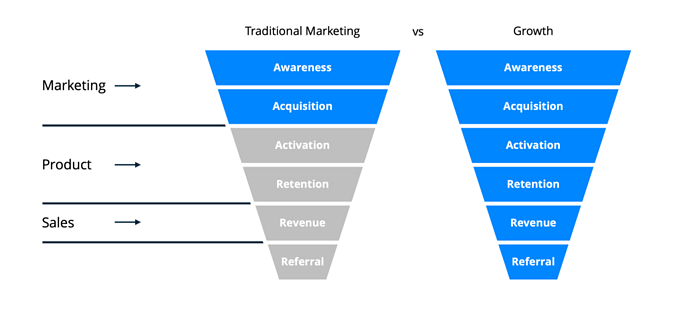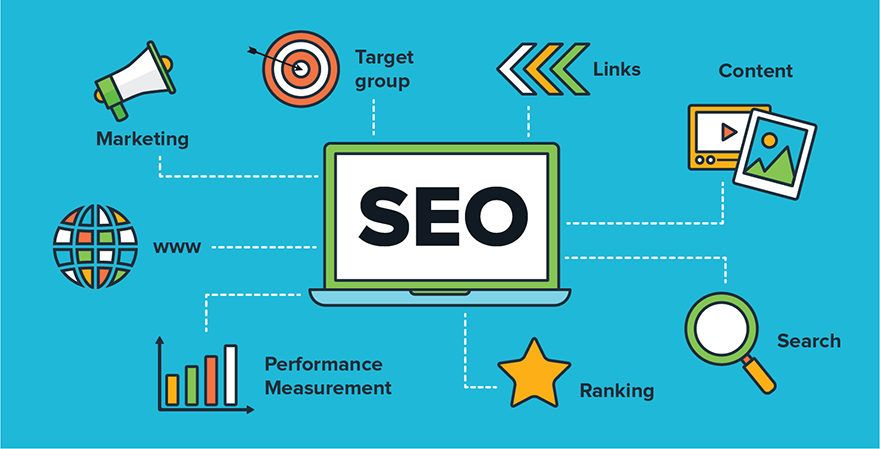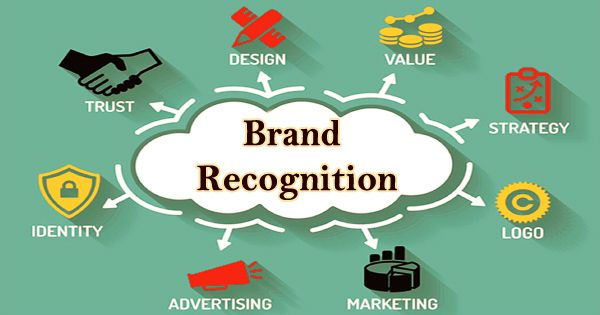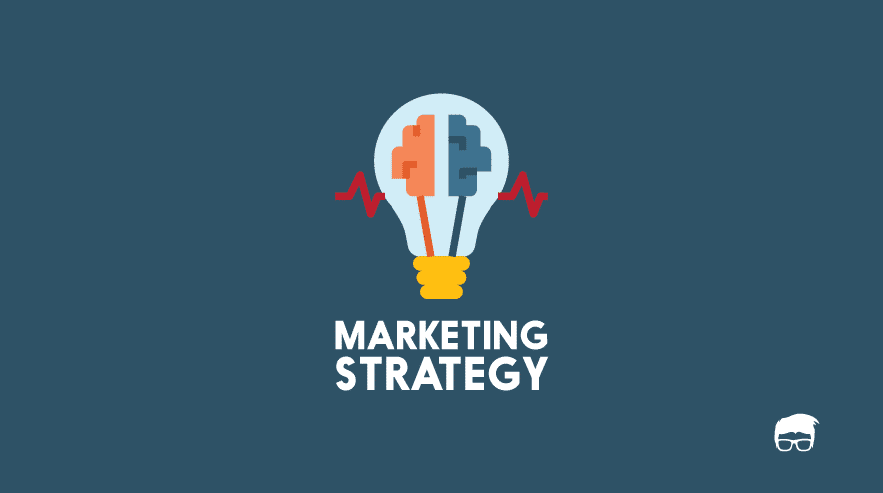The Future of Growth Marketing: 4 Key Takeaways
Marketing is a discipline that loves and is filled with buzzwords. One such, in fact, popular buzzword is Growth Marketing. But, not just a buzzword; it is also a high-demanded strategy to make a company grow in quick time succession. In fact, a news report claims that businesses have spent $340 billion a year just on marketing.
With so many tools and strategies available at a marketer’s disposal, it is indeed tough to know if they are opting for a suitable marketing strategy for the business. Fortunately, you have us to make that process easier for you. So, let’s talk about Future of growth marketing strategies, what it is, and why your business needs them.
What is Future of Growth Marketing?
Future of Growth Marketing is a series of tests, experiments and processes that builds and works on scaling a company’s customer base and revenue collection with the help of innovative and low-cost strategies. Given that the process involves experiments and tests, the strategy might sound a tad bit intimidating. However, you can surely get positive results with an insight into how it works and how businesses have experimented with it successfully.
Typically, a growth marketer focuses on customer acquisition which is the aim of the top of the sales funnel. So the goal is pretty much to make a sale; end of the story.

The foundation of this marketing strategy has five major pillars for growth hacking:
- Determine the Ongoing Marketing Initiatives: Conduct a comprehensive audit that helps you evaluate where you get the best leads, page views, and traffic. This way, you will get an idea of which channels are ideal for your business.
- Set Realistic Goals: Think of where you want the numbers to improve and devise plans to help you achieve them.
- Conduct experiments for Verifying Hypothesis: Have multiple ways to test all your theories and the strategies that will help you achieve those marketing goals you have planned.
- Run the experiment: Keep running your experiments until you get statistically relevant outcomes. You can also optimize until you reach what you aim for. You
- Attest your Successful Results and Share with the Marketing Team: Document your successful results and share them with your marketing team. Future of Growth marketing is all about improving on the aspects of what you already have. When you develop a technique that you think will revolutionize marketing, spread the word.
Future of Growth Marketing became quite the marketing rage and was being practiced by popular startups like Twitter, Airbnb, Dropbox, and LinkedIn. This paved the way for a new learning space. So you can find various books and courses being developed on this strategy. With this popularity, one can think about the future of general marketing strategies.
Marketing has evolved and tried to come in line with the demands and requirements of customers, which is why personalization has become so relevant in a digitally-driven world. With social media revolutionizing the marketing world, companies have come to know about their target customers and what they seek in their products/services.
Now, the business that addresses the needs and wants the best way has become a priority in the customer’s mind. While many companies changed their strategies, many of them stuck to the old way of marketing, retaining their old segmentation and strategies, which ultimately lead to their downfall. Since customers are demanding and want the company to be there while incorporating changes in their lives and addressing their every need and want, companies have to up their marketing game.
So what is it that makes growth marketing the hit formula for businesses? Let us see:
What is the Benefit of Future of Growth Marketing?
SEO Benefits

If you run a PPC campaign or are on social media, the data compiled offers insight into which keywords are your higher performers. So no matter what the searchers interact with within social, it will impact the overall search results. You can leverage the data and use your website’s activities’ engagement.
Branding Recognition

When you address a need or pain point of your consumers, it will relate your brand to them. You can accomplish this in different ways, like monitoring your Facebook or Twitter accounts and those of your competitors. When you become a part of a conversation and provide your valuable information, you are actually using the moment to your advantage and growing your company
- Improve Existing Campaigns
Utilize the leads that you have acquired from your old campaigns and take full advantage of them by following them on social media platforms or exploring different ways of collecting additional details on their buying habits. Measuring the monetary differences between lead sources is another way of maximizing the data.
- Prevent PPC Overload
With the help of diversification of Future of growth marketing, you can avoid the saturation of PPC. While PPC is fine, it encompasses spending more money on a single campaign to attract more leads, and ultimately, the bigger competitors will raise their PPC budget as well. Therefore, it will eventually result in an enhanced expense with an ROI likely to remain the same.
- Attracting New Customers
Future of Growth marketing leverages data compiled from the new consumer base, thereby identifying the specifics of what they were attracted to via the sales funnel. With the new information, you can modify the marketing strategy to align with your audience.
Though growth marketing demands current attention and data analysis with creative ideas, the same money can work for you in numerous ways.
Let us now give you the four key growth marketing takeaways when it comes to the fate of this marketing strategy:
Key Takeaway 1: Improve your Marketing Strategy

Many analysts and marketing experts believe that significant gaps exist when it comes to the intention and the abilities required for implementing marketing strategies. Bridging those gaps will prove beneficial for the marketing experts to improve the implementation and execution of the strategies that will help in delivering the results that marketers expect. These are some of the ways of achieving an improvement in the marketing strategy:
- Marketing Technology
When it comes to devising marketing strategies, martech has proven to be key in devising marketing strategies. However, many marketers admit that they have not received all the advantages of their investments made in martech investments. According to a survey on CMO Spend and Strategy, marketing technology takes up 22% of the marketing budget, but only half of CMOs efficiently adapt and utilize marketing technology. If you want to identify this, you can hand over the marketing technology roadmap to a Growth Marketing agency and empower the profile of defining and managing the martech.
- Marketing Skills
In modern marketing, skills that are relevant, like creativity, resourcefulness and adaptability, have wide gaps between their reported significance and current capabilities. This is an area that’s going to have a major impact on your ROI and you should do everything to hire the right people.
- Multichannel Marketing
If you seek higher revenue and profitability in your business for multichannel marketing, there are two aspects you have to be good at. First, they are clear that accountability and leadership for multichannel marketing are strongly associated with higher revenue growth and profitability.
So when we talk about the top five aspects of the marketing budget, it is best to think about how goal-oriented they are and how it supports your business plans.
Key Takeaway 2: Make sure Your marketing is data-driven & Not Gut Instincts
The days of marketers solely relying on their sixth sense and gut instincts while making important business decisions are long gone. Instead, today’s smart marketers understand the importance of ‘data’ to keep up with the fast-moving and ever-evolving digital ecosystem. With the help of data, they try to take the most informed decisions to get the most favorable results.
To take up a comprehensive approach, today’s businesses must heavily emphasize data activation and management. These two aspects help in determining the marketing team’s ability to utilize the maximum advantage with the help of tracking, storing, and implementing it to make the right decisions.
A marketer’s work is not just limited to collecting and segmenting their data. They must also efficiently analyze it in order to see the scope of improvement in their marketing tactics and strategy. So when they consistently use the data effectively, it helps them improve their outcome throughout the marketing funnel and thereby make a better user experience during their customer journey.
A survey revealed that even though 73% of marketers are tracking data above average, there is still scope for more improvement for the 27% of marketers who scored average or below in this marketing aspect.
To have the best Future of growth marketing strategies, a business needs to take up steps that are data-oriented and not just based on intuition. Thus, constantly tracking Key Performance Indicators (KPIs) in all the strategies they apply and prioritizing data over everything.
For this to be possible, a brand or a growth marketing agency must do certain things. Below we have listed some. A business should:
- Be consistent in collecting insights. It will help them to determine the overall status of the business and constantly optimize the marketing strategy to drive company goals.
- Realize the significance of creating value and engagement at each step across the customer journey.
- Track, share, and leverage the data to connect with the customers better and anticipate their upcoming move.
- Scrutinize the data of each stage of the customer journey. It helps them focus on areas that need attention to create a more personalized experience.
- Consider every metric–from the ROI of a particular campaign to customer churn rate and lifetime value–apart from anything connected to the brand’s overall health. You can leverage all data to your advantage for building a decisive approach to keep and aim for new customers.
Key Takeaway 3. Create Powerful CX experiences
According to a survey, eighty-one percent of marketing leaders who take care of customer experience (CX) say their business will mostly or completely compete with the contemporaries depending on the CX of two years’ time. However, only 22% of marketing leaders claimed that their CX efforts exceeded customer expectations. Thus, if brands start having a customer-centric approach, only then can they succeed.
A customer experience pyramid is a concept to build successful user- experiences that improve contentment, loyalty and advocacy and starts bridging the gap between the expectation and reality of the customer. It is done in stages:

- Stage 1- Filter Information that can be Used
The path to better contentment, loyalty, and advocacy start by adhering to the primary requirements of the customers. The following stages are logical and reactive and focus on eliminating any pinprick that hinders the way to better customer experiences and satisfaction.
- Stage 2- Solves Problem when Asked
In this stage, the problems encountered by the customer must be the company’s problem. Even if it is not, that is the customer’s general idea. So when you go beyond the core level means solving the company’s primary problem when the customer asks.
- Stage 3- Solve Needs whenever Asked
The brand addresses particular demands, needs, and requests at this stage. For example, if a customer has a broken pipe in their sink, they want the pipe to work as it was before it broke. Therefore, the service men should either come with a fully functional replacement pipe or repair the pipe then and there.
- Stage 4- Provide What’s Needed Without Asking
After addressing the customer’s needs, the next stage is to move beyond it and go into aspirational customer service. It demands a holistic deeper knowledge and data about the customer and efficient processes to implement the experiences.
For example, in the case of leaky plumbing, a mobile service technician will not only fix a broken pipe to its near-original state but also check the rest of the plumbing issues and fix it during the same service call. That type of CX ensures significant satisfaction but is tough to implement.
- Stage 5- Make the Customer feel Better, Safer or More Powerful
The top framework of the pyramid is booked for amazing CX practices that redefine the elementary customer experience and what behavior the customer will have after using the product or service of the business. At this stage, businesses must not only invest in offering power to the customers but also make them feel that they own it.
This stage might sound as simple and as complicated as sending a luxury self-driving automobile that works at the push of a button to help a stranded customer to work and deliver their repaired and clean car to their driveway.
As brands go up in the pyramid, they must undertake steps to reduce or even eliminate any risk, like gathering suitable voices of customer data or even broadening their vision to incorporate the whole customer journey.
Key Takeaway 4. Don’t let Workplace Silos Tire You
As the infamous Littlefinger from Game of Thrones said, “knowledge is power,” and silos play a crucial role in your brand. They can harm your brand and limit your company’s growth when you don’t check them. On the other hand, a business that has a consolidated vision inspires more information sharing and collaboration, resulting in better decision-making and meeting more long-term plans.
Below, we have listed some ways in which brands work in silos:
- Brands working with different agencies to execute projects or campaigns- This results in a lack of coordination at both the campaign and project level and can often result in a disjointed brand experience for consumers.
- Many businesses are still dependent on the traditional marketing funnel, which involves a siloed structure with two separate brand and performance marketing and is not aligned when it comes to goals, information, and priorities.
- Marketers are monitoring limited and siloed metrics, which impacts their ability to make better strategic decisions.
The potential risks of this involve a flat-footed strategy, misaligned priorities, and less to no information and direction. In addition, when data is distributed and siloed across different teams and agencies, it is tough to keep up with the metrics, measure performance, and build a holistic view of consumers.
Due to the above reasons, it becomes important to invest in a robust culture of collaboration and learning where each team member works united and is dedicated to upskilling and finding ways of improving processes and workflow efficiency.
The bottom line here is that when you get rid of department silos and share data across teams, you can significantly improve the overall business performance of your brand.
Moreover, it also makes sense to invest in a single Future of growth marketing agency with a well-structured strategy across every channel to gain a united view of the insights and lifetime value of the customers.
Ending thoughts
You’re incorrect if you think Future of growth marketing is about finding the ideal marketing method for your business. Instead, it demands a solid foundation to grow from, so if your business is still in the beginning phase, you must focus on establishing your name rather than spending too many resources on growth marketing strategies.
If you’re at the point where scaling your business is your main goal, or you seek high growth and need to up your marketing game to get more ROI, you must consider executing some Future of growth marketing experiments to see the pirate metrics growth.



